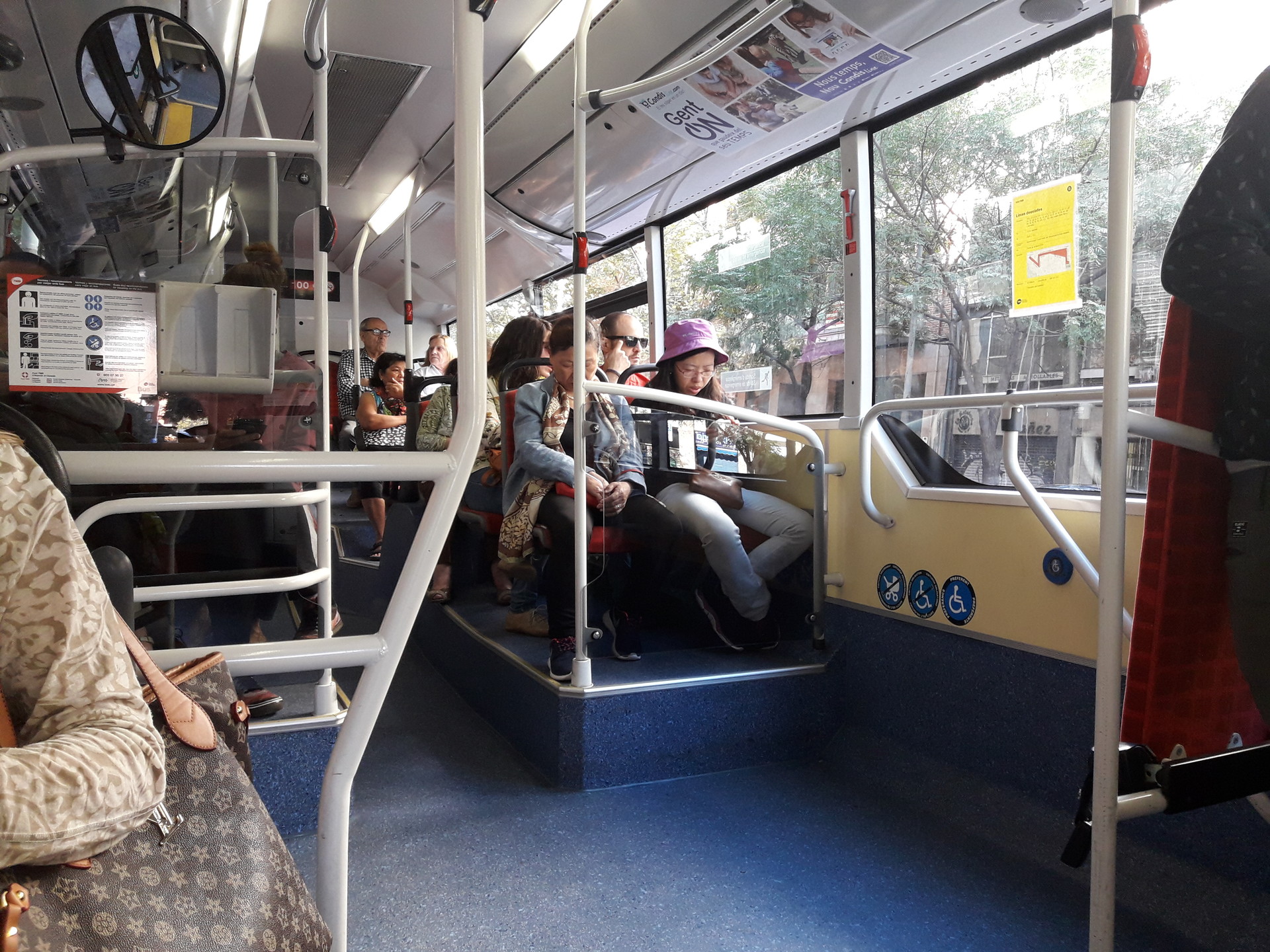Barcelona - Public Transport System for First Time Travellers
Since I have visited Barcelona many times, I personally find the Metro station layout is quite simple, there are no places to sell tickets, gas station is just a simple bar. But looking at the map, I mean to those new to Barcelona that Barcelona's metro system is a real labyrinth, in part because you'll have to get used to the Spanish language (of course). It's better than Greek because it's not an alphabet, the roads are knitting like ants. However, if researched and prepared, everything will be much easier.
Travel to Barcelona
Fly to Barcelona
At present, if you travel to Barcelona from Hanoi with Vietnam Airlines, you still have to transit to Paris, or if you travel with foreign airlines like Qatar Airways or Emirates, you will transit in the Middle East. From Europe (Schengen area) you will easily reach Barcelona by plane, train or bus. See also Experiences for a long Europe round-trip and European cruise experience. In case of Turkish airlines, I have travelled to Barcelona through transiting in Istanbul Airport.
In the airline to and from Barcelona, you should pay attention to Vueling Airlines, this is the airline of Barcelona should always have plenty of flights during the day but the price is also very good.
For most of Vietnamese people, I know that we almost all apply for Schengen visa from France so If you fly from Paris, it has planes at both Orly and CDG airports. You can also choose other carriers such as Transavia (Orly) or Ryan Air (unfortunately only at Beauvais airport about 80km far from Paris).
Barcelona has two airports but only Barcelona-El Prat Airport is near the city, the other airport is very far (about 100km) so there are usually not many airlines flying through this airport (except Ryan Air). But now Ryan Air has flown to El Prat.
How to get from Barcelona El Prat Airport to the city
♦ Shuttle bus: From El Prat airport to the city has many facilities such as Taxi, Shuttle bus or Metro, the most convenient way I go to the airport lobby is to catch the bus to the center, It takes a trip and takes 30 minutes into the city. Buses to the center and travel through many streets in the city should sit in the car to watch the city always take a share of the cost of "hop on-hop off". If you take a taxi, the price is around € 30-40 and it takes about 20 minutes.
From the airport you follow the directions to the lobby (Barcelona airport is not very big) to catch the Aerobus. There are two Aerobus vehicles at the airport: A1 (Terminal 1) and A2 (Terminal 2), both of which have a terminal at Plaça Catalunya (City Center). From here you can either walk or catch a Metro (Metro) to the hotel room you booked earlier (other stops are Plaça Espanya, Gran Via - Urgell, Plaça Universitat). One thing to keep in mind is that if you go from city to airport, take a closer look at which terminal (T1 or T2) you are flying from to the right (A1 or A2). take 30 minutes to find the right station. The bus fare is € 5. 90 / way and € 10. 20 rounds are valid for 15 days (consider if you fly in both directions).
Both of these buses have 4 stops in the city center: Plaça Espanya, Gran Via / Urgell, Plaça Universitat and Plaça Catalunya, remember these places to stop near the hotel. But when going back to the airport, the bus only pick up at 3 points Plaça Catalunya, Sepulveda-Urgell and Plaça Espanya.
♦ Train (train):

If you come to T2 you just walk through from the 1st floor at the direction of Metro Station, take Renfe's R2 Nord train line. If you come to T1 you will have to catch a free shuttle bus between 2 stations to T2 lost 10 'range. The fares for the city are € 4. 10 or free if using T-10 tickets. If you want to get to the city center you should get off at Passeig de Gràcia station to get to the hotel by L3 or Line L2, L4 in minutes. Easy peasy.
♦ Metro: If you travel by Metro to the airport you can go from Clot Station, Passeig de Gràcia or Barcelona Sants, the airport terminal is named Aeropuerto. Metro runs every 30 minutes with a trip, the price of retail € 4. 50 per turn.
The Metro service to the airport is only open since February 2016 with Orange and L9 Sud lines on both T1 and T2. Regular Metro train runs from Monday to Thursday from 05:00 to 12:00, Friday to 2:00 am, and separate weekends run from Saturday to Sunday night.
♦ City Bus: Cheaper, I will recommend you to catch the city bus, bus 46 (parked at T2) or get NitBus N17 (T1) at T10 or T10. If you go separately, the price is still € 2. 15 / visit.

Alternatively, in my opinion, if you go and visit many museums, I think you should consider purchasing a Barcelona Transport Pass or Barcelona Tourist Card.
Take the other public transport means to Barcelona
• Train: By train, regular Schengen trains will reach Barcelona Sants Station, which is the central station and can be reached from here to other cities in Spain and Europe. Take the train from Paris you can go from Gare de Lyon station, daily there are 2 trains running straight at 07h: 15 and 14h: 07.
• Bus: If traveling by bus to Barcelona, it will usually stop at Estació del Nord near the Arc de Triomf.

Traveling in the city
To walk around in the city, it is best to walk, and the points away from you go to Metro for fast. Metro stations are usually underground and are everywhere. The fare for a trip is € 2. 15, but you should buy one trip one (or T10) for € 9. 95 if you stay in Barcelona for 2-3 days or more, thus saving more than € 10 then. Metro works from 05:00 to 24:00, Friday to 2:00 and Saturday 24 hours.
Buying a T10 card is easy to get to any Metro station that also has an automatic ticket machine, put money into buy only. Each time you take your card into the reader, the machine will scan the bar code and count the number of times you have gone. T10 cards can go both Metro and public buses in the city. The only thing to pay attention when you go Metro, bus or when standing in public places are always high alert because of theft here. I am lucky to visit Barcelona in the day, the way I will go to Barcelona early in the morning to catch the last train to Tarragona so my time in Barcelona extremely safe to see such a phenomenon!
Integrated tariff system
Public transport of Barcelona includes a variety of facilities such as bus, metro, tram, commuter train and run by various companies. For example, the bus and metro system operated by the TMB, the ship is Renfe's and the FGC operates the train and the 3 metro lines. Fortunately, the confusing complex system is run by a unified system of the Autoritat del Transport Metropolità (ATM).
The system divides Barcelona into six zones and multiple ATM tickets are designed according to which zones you plan to travel. In fact, these 6 zones are a very large area, Barcelona is just the center of it. Zone 1 is the largest and includes downtown Barcelona. If you are only traveling in the city or traveling back to the airport, you only need to buy a travel card in Zone 1, and only care about other zones if you intend to go in the vicinity, day-trip during the day.
Types of tariff cards (used for all types of vehicles)
T-10: Ticket type 10 multi-user flights, the price depends on different zones, for example zone 1 fare is € 9. 95. T-10 tickets are not available for Metro stations at airport line L9.
T-50/30, T-70/30: 50 or 70 trips within 30 days, € 42. 5 and € 59. 5 respectively for Zone 1 and T50 only. and many (type T70).
T-Dia: Unlimited travel in a day and combined zone, the price for one zone is € 8. 40, using one return trip from the airport to the city.
There are also other types of T-Mes and T-Trimestre, but not suitable for short-term tourists, see more on the ATM website. In the above types, the T-10 is the most popular and should be bought, because actually in 3-4 days in Barcelona you go to Metro is not much, mainly to walk. If you make a reasonable schedule, you will walk most of the day, just the beginning of the day, or at the end of a day to travel a new distance to Metro.
If you buy T-10 for Zone 1 you need to remember that this ticket is only available for airport departure when you take Renfe train, or TMB City bus 46, night bus NitBus N17 but not Metro. The other Tariff Card you use is Metro to the normal airport.
This unified Tariff system allows you to exchange up to three different types of journeys on one journey, not counting the other, from the AB point you will be upgraded from Metro to Bus and Tram. There will be no change of one type from one Metro station to another. If you are out of the Metro station and come back you are required to buy a new ticket. Time to exchange free media is within 2 hours.
Metro lines that you need to pay attention to your schedule
Line L9 Orange to go from the airport to the city center, the end point is Zona Universitària you change train to go back to the hotel. This point is also quite close to the Camp Nou Stadium, or if you want to go Camp Nou from the city you can go to Metro Palau Reial, Les Corts or Badal.
Important traffic junction: Place Placa Cataluyna, the intersection of many Metro lines such as L6, L7, L2, catch a station or just walk from the square to Passeig de Gràcia, where there are 2 Gaudi works: Casa Batlló and Casa Mila.
Barcelona's central station is Barcelona Sants with quite a few Metro lines going here, you go Metro to Sants Estacio station to the central station.
Take the train from Barcelona to other cities
I have to admit that the Spanish train system is very convenient, simple and fast because the AVE high speed train of the country can run at speeds of up to 300 km / h. With such speed from Barcelona to Madrid only 2. 5h with a fare of around € 40 (fast and convenient by plane), going to Seville takes 5h25 'with a fare of around € 46, going to the beach city of Malaga 5h50 ticket price € 46. The train departs for Madrid every 1 hour, while traveling to Seville, Malaga
However, every city has negative side, I see Barcelona also have many things not good yet. Barcelona is a smoke-free city so it is not easy to avoid indirect smoking here. The Spanish government has banned smoking of certain places, but not all citizens are strictly abiding by the law. The type of Metro I was waiting for was black or Latin American smokers, which was obviously a public place!

In addition, I find pickpockets a big problem here and tourists are often targeted. The good news is that pickpockets do not include violence and if you are careful they will not happen. You should not put high value items in your pocket and only carry the essential items when you go out: cell phones, IDs and money.
Photo gallery
Content available in other languages
Want to have your own Erasmus blog?
If you are experiencing living abroad, you're an avid traveller or want to promote the city where you live... create your own blog and share your adventures!
I want to create my Erasmus blog! →



















Comments (2 comments)
WOw!
Good!